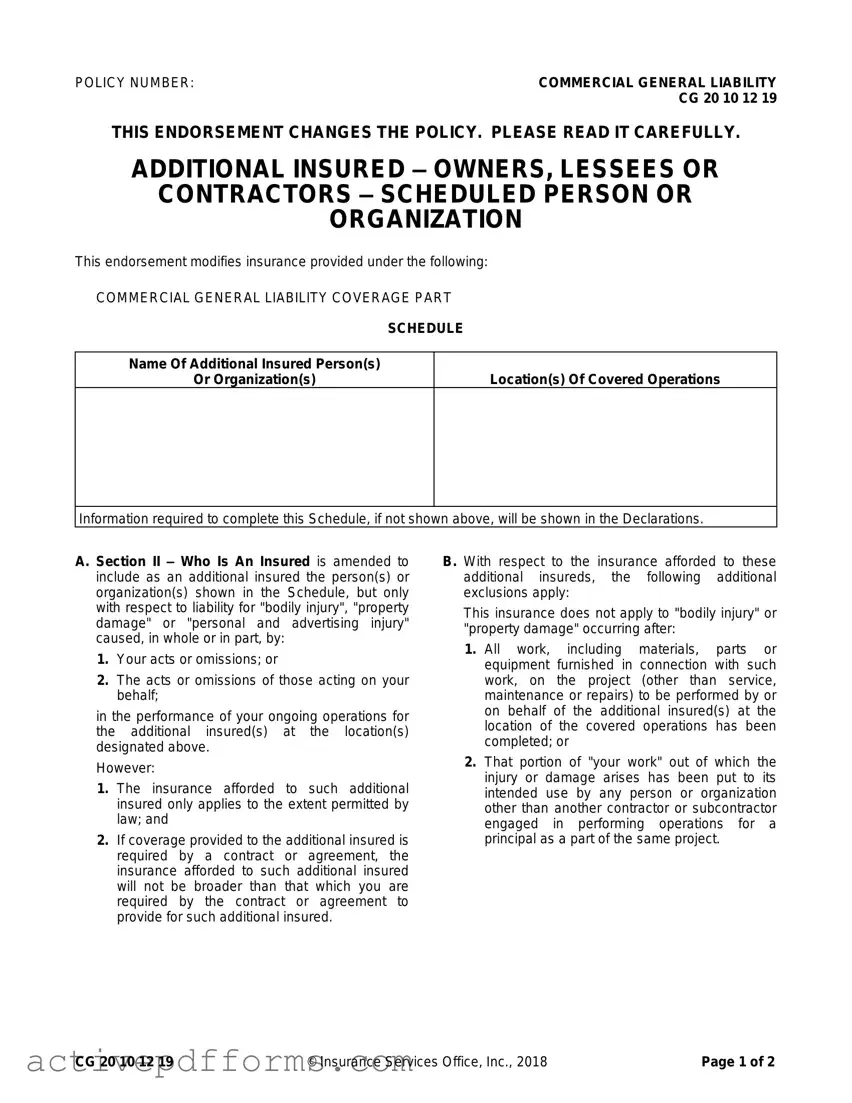Free Cg 20 10 07 04 Liability Endorsement PDF Template
The CG 20 10 07 04 Liability Endorsement form is a critical document within commercial general liability insurance, specifically designed to extend coverage to additional insured parties such as owners, lessees, or contractors. This form modifies the insurance policy by detailing the conditions under which additional insureds are covered, particularly focusing on liability arising from bodily injury, property damage, or personal and advertising injury. It is essential for parties involved to understand the limitations and exclusions that apply to this endorsement, ensuring clarity on the scope of coverage provided.
Edit Cg 20 10 07 04 Liability Endorsement Now

